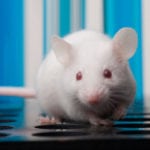 Weird Stuff
Weird Stuff  Weird Stuff
Weird Stuff  Our World
Our World 10 Ways Your Christmas Tree Is More Lit Than You Think
 Movies and TV
Movies and TV The 10 Coolest Stars to Set Sail on The Love Boat
 History
History 10 Things You Didn’t Know About the American National Anthem
 Technology
Technology Top 10 Everyday Tech Buzzwords That Hide a Darker Past
 Humans
Humans 10 Everyday Human Behaviors That Are Actually Survival Instincts
 Animals
Animals 10 Animals That Humiliated and Harmed Historical Leaders
 History
History 10 Most Influential Protests in Modern History
 Creepy
Creepy 10 More Representations of Death from Myth, Legend, and Folktale
 Technology
Technology 10 Scientific Breakthroughs of 2025 That’ll Change Everything
 Weird Stuff
Weird Stuff Ten Bizarre Facts About The Doge Meme
 Our World
Our World 10 Ways Your Christmas Tree Is More Lit Than You Think
 Movies and TV
Movies and TV The 10 Coolest Stars to Set Sail on The Love Boat
Who's Behind Listverse?

Jamie Frater
Head Editor
Jamie founded Listverse due to an insatiable desire to share fascinating, obscure, and bizarre facts. He has been a guest speaker on numerous national radio and television stations and is a five time published author.
More About Us History
History 10 Things You Didn’t Know About the American National Anthem
 Technology
Technology Top 10 Everyday Tech Buzzwords That Hide a Darker Past
 Humans
Humans 10 Everyday Human Behaviors That Are Actually Survival Instincts
 Animals
Animals 10 Animals That Humiliated and Harmed Historical Leaders
 History
History 10 Most Influential Protests in Modern History
 Creepy
Creepy 10 More Representations of Death from Myth, Legend, and Folktale
 Technology
Technology 10 Scientific Breakthroughs of 2025 That’ll Change Everything
10 Animal Poisons with Amazingly Specific Purposes
The primal ballet of life and death is as present in nature now as it was millions of years ago. Every day, tiny wars are fought on billions of battlegrounds all across the earth as each species uses its own special adaptations to ensure its survival until the next sunrise. Sometimes individuals die, but each act of death strengthens the species as a whole, leaving only the strongest to carry on those unique survival traits to the ensuing generation.
And sometimes those traits take on bizarrely specific forms, as is the case with these ten naturally occurring neurotoxins. A neurotoxin is a chemical that affects the nervous tissue—a lethal natural weapon that would violate every Geneva Convention of the animal kingdom—which is often created as a defensive or predatory mechanism. Beautiful in many ways, these neurotoxins have nevertheless adapted to one amazingly specific purpose — besides causing a horrifying and painful death, that is.
Each neurotoxin, having a rather obscure scientific name, will be listed instead by one of its notable effects.

Most neurotoxins work mainly by shutting down the nervous system in some way – but atracotoxin does the opposite. It hyper-stimulates the nervous system to the point of overload. As the toxin works its way through a victim’s body, it elevates blood pressure, eventually causing the millions of air sacs in the lungs to burst (pulmonary edema), a condition which causes you to effectively drown on dry land.
And here’s the crazy part: Atracotoxin is harmless to just about every type of mammal, but it’s deadly in primates. Out of all the potential animals against which this spider would have to defend itself, it developed a neurotoxin that is specifically aimed towards one. Us. Well, also monkeys – but mostly us.
This specific neurotoxin is found in the Sydney funnel web spider, which has only been sighted in one city on earth: Sydney, Australia. It’s considered the most dangerous spider in the world because its venom (which is actually a cocktail of chemicals and neurotoxins) can kill a human in only 15 minutes. Fortunately we have an anti-venom, and there haven’t been any funnel web spider related deaths for about 30 years – but it’s yet another decent argument for changing Australia’s name to “That place where you’ll probably die.”
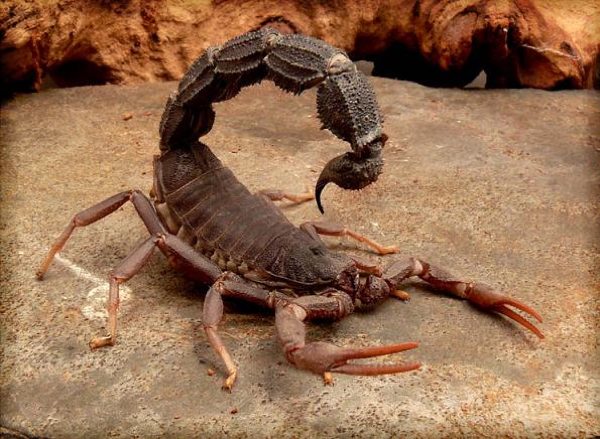
Dortoxin is found in the South African spitting scorpion, and is probably one of the most unpleasant ways you would ever want to die (although this is a long list, so don’t pick straws just yet). When researchers tested the toxin on mice, it led to convulsions, tremors, and hyperactivity that didn’t end until 30 seconds AFTER the mouse was dead. The scariest part is that it only took 20 nanograms (one billionth of a gram) to kill a 20 gram mouse.
The venom of the spitting scorpion actually has three very different toxins, but what makes it so unusual is that the scorpion can, at will, select a different type of toxin for different purposes. It’s known as the spitting scorpion because it does just that—it will first shoot a small amount of venom at its target before stinging with its tail.
Researchers believe it does this to conserve its more potent venom, which takes more energy to produce. This “prevenom” is composed of a different toxin mix and regenerates more quickly and can effectively scare away a predator or simply kill a small victim on its own, with no need to break out the big guns unless it’s really necessary.
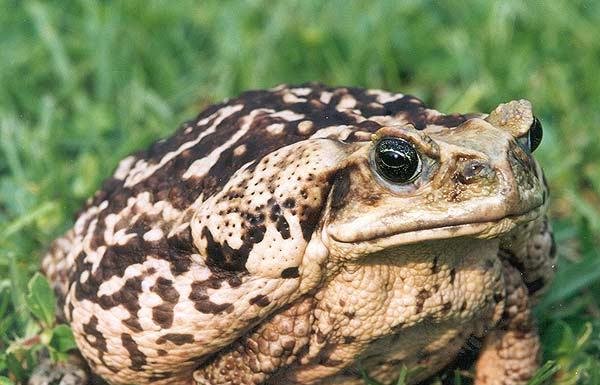
Have you ever seen that episode of Family Guy where Chris starts tripping after licking toads? Well, that’s a real thing, and it’s due to Bufotoxin, a cocktail of chemicals found on the bodies of certain toads. Among other alkaloids, the Bufo toad’s venom contains 5-MeO-DMT, a psychoactive substance similar to psilocybin and mescaline, which are collectively known as “God’s breakfast.” That is, some of the reported effects of 5-MeO-DMT include perspective shifts, spiritual experiences, euphoria, visuals, and, at least once, the “feeling of being sat on by an elephant/”
Bufotoxin is secreted through glands on the backs of Bufo toads and is, plain and simple, a defense mechanism. It’s easy to laugh about it, but it’s actually incredible that something like this evolved in such a specific way. Unlike neurotoxins that kill the victim, bufotoxin has the much nicer result of leaving the victim alive with the memory that it should stay away from that type of toad.
Say you’re a predator who tries to eat a toad. Maybe you don’t spend three hours barely conscious wondering why at the vagaries of the universe while the sky folds into itself and a cactus explains the virtues of sock ironing – but you’re thrown into an incredibly vulnerable state for an appreciable length of time, which typically spells death in the animal kingdom. The point being, if you manage to survive the first dose of bufotoxin, you don’t go back for a second.
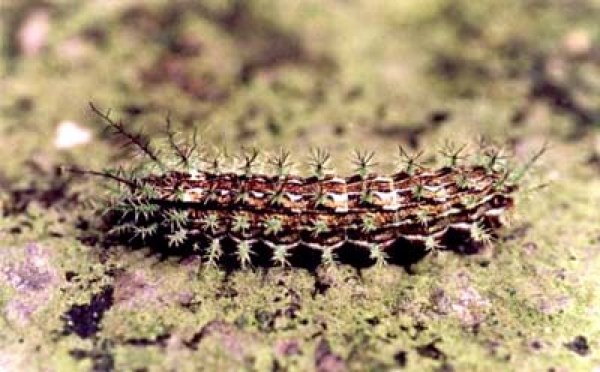
Studies on the Lonomia obliqua caterpillar are few and far between, mostly because it wasn’t much of an issue until about 20 years ago, and since then there have been over 500 deaths associated with envenoming by this caterpillar. For comparison, the Sydney funnel web spider mentioned in #1, the “most dangerous spider in the world,” has only caused 13 deaths in the past 100 years.
Researchers are still working to name the exact neurotoxins present in the Lonomia’s unique venom, but they are already well aware of their effects: One woman who was stung by the caterpillar died through intra-cerebral hemorrhaging – in other words, her skull filled with blood. Because of this case, along with others, scientists believe that one of the main toxins in the venom attacks the proteins in blood cells which normally allow blood to clot (which actually makes it a haemotoxin, not a neurotoxin). The blood then loses its ability to clot, causing blood to collect near the wound, resulting in massive bruising that slowly spreads over the body like gangrene.
In other words, it kills by filling your body with blood that eventually puts too much pressure on something important, causing it to burst.
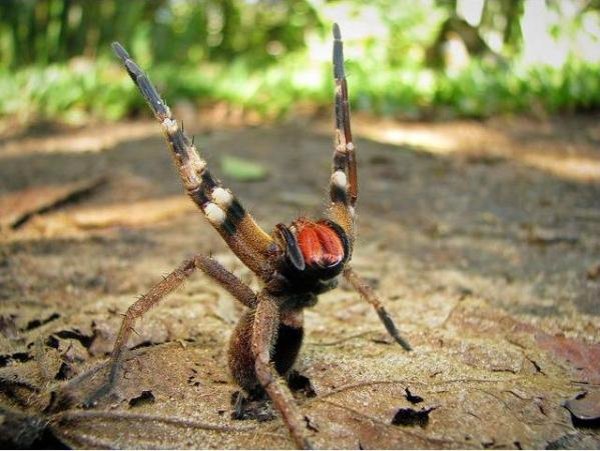
Honestly, we could have just called this list “Oh My God Spiders” and left it at that. Spiders are some of the most cold blooded killers in the animal kingdom, and if they created a society based on ability to kill, the Brazilian wandering spider would be their king. One of the main components of the venom of the Brazilian wandering spider is a neurotoxin called PhTx3.
Let’s start with the basics: PhTx3 can give you an erection that’s so intense it leaves you impotent. Crap, wait, we were going to build up to that. But seriously, what else could be more important? The condition is known as priapism, and is caused by a specific element in the neurotoxin called Tx2-6. From an evolutionary standpoint, a creature that is impotent serves absolutely no place in nature, so the Brazilian wandering spider doesn’t just kill its attackers, it literally renders them obsolete. In addition to an uncomfortably raging boner, PhTx3 targets the calcium channel in neural synapses with the effect of causing involuntary muscle control, especially around the respiratory system, leading to asphyxiation by preventing your diaphragm from contracting. Basically, you suffocate to death.
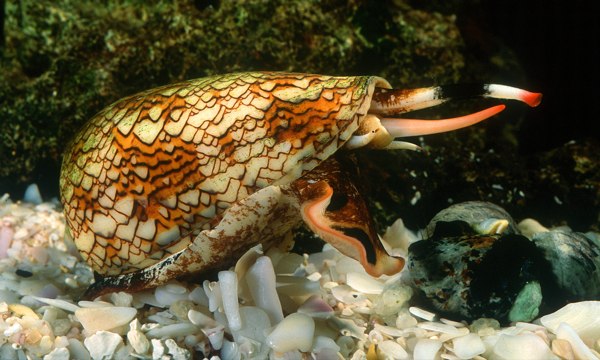
When you think of animals that can cause horrible death, snails don’t usually make it far up the list. The cone snail, however, is a killer. The complex group of neurotoxins used by the cone snail to kill prey are known collectively as conotoxins, and are some of the most powerful toxins in the world. The reason is that cone snails are aquatic hunters—in the ocean, you have to be able to kill your prey as quickly as possible so it doesn’t swim away first, only to get swept off or eaten by another fish. Cone snails shoot out a barbed harpoon at their prey to paralyze it, and that’s what commonly leads to stings in curious humans who pick up the shells.
The severity of the sting depends on the species of cone snail. Smaller ones might feel like a bee sting, while larger ones, like the geographic cone snail, can kill you. What’s so unique about these neurotoxins, besides their tremendous strength, is that each one of the 500 or so species of cone snail can have a unique combination of up to 100 different toxins, giving the genus as a whole roughly 50,000 individual toxins to draw from, all of them having evolved in their own special way. For example, there’s one toxin – now a painkiller – that reduces pain so that the victim doesn’t realize it’s about to be killed.
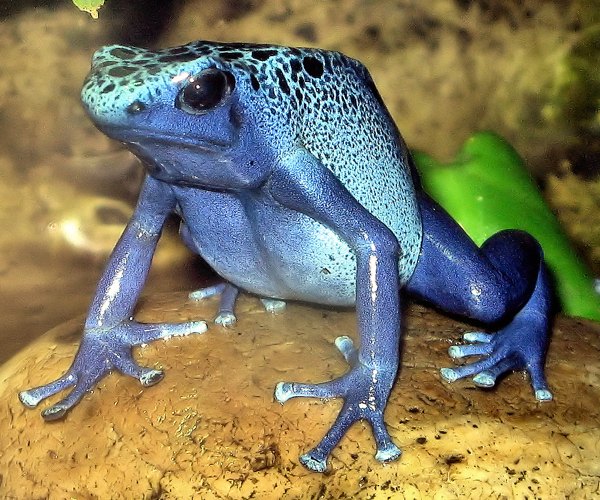
There’s a good chance you’re familiar with the poison dart frog – those brightly colored little frogs that are so poisonous you can die just from touching them – and they are definitely remarkable in a number of ways, but what’s truly incredible is the way these frogs create their batrachotoxin, the main neurotoxin responsible for all that killing.
See, most neurotoxins in the animal kingdom are synthesized from the individual building blocks that make up the molecule of the toxin, all of which happens inside the animal in question. They work like a factory, bringing in raw materials and producing a specific product. In poison dart frogs, the toxin is pulled, already manufactured, from its diet. Its body has evolved so that it has a mechanism responsible for processing and storing batrachotoxin the same way the rest of us process and store proteins, amino acids, and fats. So while most toxic creatures act like factories, the poison dart frog is a raiding party, just picking up the pieces as it goes and doing what it can with them.
We know this is the case because poison dart frogs in captivity are essentially harmless. With a change in diet they completely lose their toxicity, yet when captive frogs, even frogs that were born in captivity, are released in the wild, they will again produce batrachotoxin.
And that’s good news for frog farmers, because a single wild dart frog can contain as much as 1,100ug of the toxin, and, well, it only takes about 130ug to kill an adult human. The toxin works by exciting acetylcholine receptors which eventually causes a heart attack.
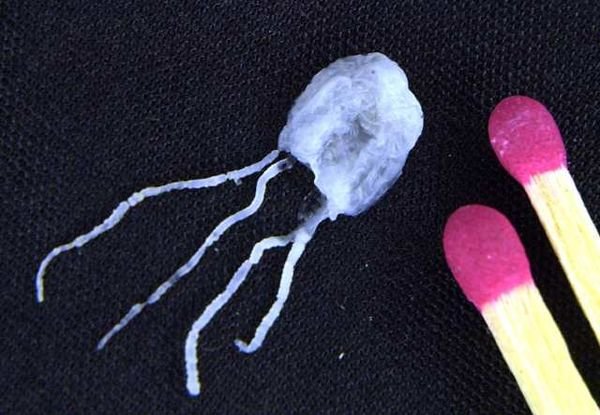
The Irukandji jellyfish, or box jellyfish, is one of the most deadly creatures in the ocean, responsible for at least 70 known deaths. It lives off the coast of Australia and is so small (less than 1/4 inch in width) that you rarely ever see them in the wild. Even people who have been stung rarely know what hit them until the paramedic tells them later.
A single sting from this jellyfish (which, again, is smaller than your pinky nail) is so strong that it can bring down a full grown man. Like the cone snail, this is likely due to the law of the ocean: Kill fast so you don’t lose your prey. It’s the same reason the yellow-bellied sea snake is more venomous than any of its land based cousins.
Unfortunately, while a shrimp or small fish will die instantly, humans go through a range of unpleasant symptoms before they die, including (from Wikipedia) “excruciating muscle cramps, severe pain in the back and kidneys, a burning sensation of the hands and face, headaches, nausea, restlessness, sweating, vomiting, an increase in heart rate and blood pressure, and the feeling of impending doom.”
Feelings of impending doom…this toxin doesn’t just want to kill you, it wants you to KNOW you’re going to die a horrible death.
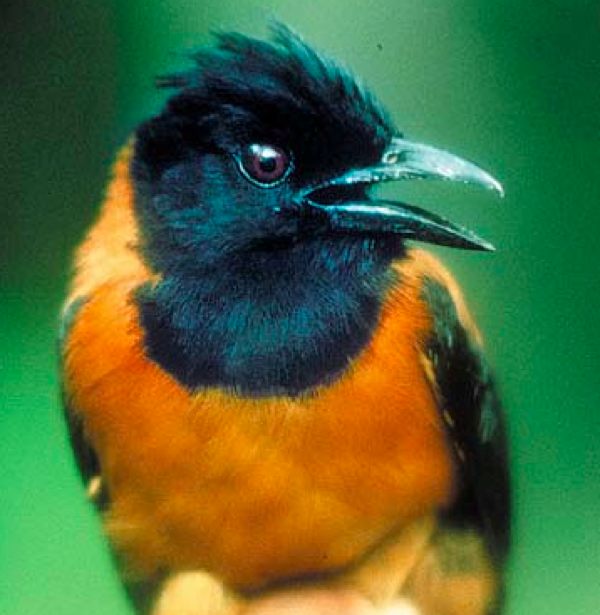
If you look closely at that title, you’ll see that it’s pretty much the same neurotoxin found in poison dart frogs. So why are we listing it again? First of all, homobatrachotoxin is a neurotoxin found in the hooded pitohui, which you can probably tell from the picture is a freaking bird. The hooded pitohui is the first discovered poisonous bird, although we’ve found several other species since then.
But it gets crazier. Remember how we said that the poison dart frog gets its toxin from its food? Well, the hooded pitohui lives in Papua New Guinea, roughly 10,000 miles across the Pacific Ocean from Central and South America (stomping grounds of the dart frog), and somehow it has evolved this EXACT same biological mechanism that allows it to absorb and later secrete the (incredibly rare) batrachotoxin family of neurotoxins.
Even assuming they eat the exact same diet (they don’t), the chances of two entirely different classes of animal developing the same bizarre evolutionary trait despite full geographic separation is, well, not impossible, but pretty damn close.
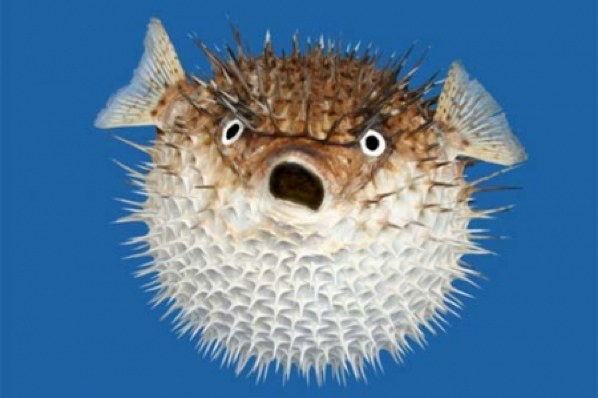
The puffer fish is pretty well known, both by its tendency to balloon out hilariously at the first sign of danger, as well as its reputation as one of the more deadly sushi platters. The toxin responsible is known as tetrodotoxin, which is actually taken from the order name that encompasses puffer fish, tetraodontiformes.
But – you guessed it – it gets crazier than that. The same neurotoxin, which is 100 times more deadly than potassium cyanide, is found in blue ringed octopus, a few newt species, and an entire family of sea snails. That’s because tetrodotoxin is actually produced by bacteria which has developed a symbiotic relationship with all of these different marine animals. For whatever reason, these animals have evolved to be able to coexist with this bacteria in a mutually beneficial relationship.
Picture it like this: The bacteria is a gun. Some things use it for defense, others for offense, but the bacteria doesn’t give a crap either way; as long as it continues producing this one byproduct, it will have a home. So while all the other neurotoxins on this list are either defense mechanisms or tools for predation, tetrodotoxin is simply a lucky break for a neutral bacteria, like someone who discovers he can juggle and gets high-paying job with a traveling circus—a circus that just so happens to kill people.



